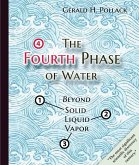Ever wonder? What mysteries lurk in the depths of a glass of water? What makes the wispy clouds of vapor rising from your cup of hot coffee? Or the puffy white clouds hovering in the sky? Why do the bubbles in your pop get bigger the longer you wait? What keeps Jell-O's water from oozing out? Why does your tongue stick to something frozen? And why don't your joints squeak? Questions such as those have remained unanswered not only because they have seemed complex, but also because they require that scientists pursue a politically risky domain of science: water research. Scientists trying to understand the ?social behavior? of H20 do so at grave risk to their reputations and livelihoods because water science has suffered repeated fiascos. Water scientists have been virtually tarred and feathered.Undaunted, one scientist has navigated the perils of water science by conducting dozens of simple, carefully controlled experiments and piecing together the first coherent account of water's three dimensional structure and behavior.Professor Pollack takes us on a fantastic voyage through water, showing us a hidden universe teeming with physical activity that provides answers so simple that any curious person can understand. In conversational prose, Pollack relentlessly documents just where some scientists may have gone wrong with their Byzantine theories, and instead lays a simple foundation for understanding how changes of water structure underlie most energetic transitions of form and motion on Earth.Pollack invites us to open our eyes and re-experience our natural world, to take nothing for granted, and to reawaken our childhood dream of having things make sense.








